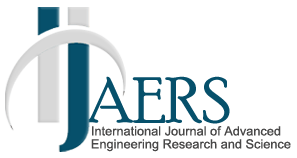Quality Assurance Requirements Tailoring Approach for Small Satellite Projects |
| ( Vol-9,Issue-8,August 2022 ) OPEN ACCESS |
| Author(s): |
João Manoel Zaninotto, Jose Eduardo May, Gledson Hernandes Diniz, Mauricio Gonçalves Vieira Ferreira |
| Keywords: |
|
tailoring, requirements, quality assurance, small satellites. |
| Abstract: |
|
In regulated environments, which have impacts on the society, standards are adopted to determine rules to be followed, since the society expects to receive safe and reliable products and services. Regulatory agencies usually require adherence to requirements established in norms and standards so the product can be approved. In this context, space programs Quality Assurance standards are applicable to satellite projects with a wide responsibility range, from experimental small satellites to manned spaceships. Applying the full contents of these standards may be unfeasible to small missions with low responsibility, considering the cost and schedule constraints inherent to this type of project. Therefore, a customization of the requirements must be conducted in a thoughtful and disciplined manner, considering the project characteristics. The tailoring process presented in this work includes the analysis of the risk to the mission due to the reduction of the set of requirements. Each requirement was evaluated in view of its maintenance, modification, or elimination. This paper presents a process of tailoring mission-specific requirements, using a mission risk rating and the risk analysis tool FMECA. The result was a structured process for tailoring requirements, which provided a subset of Quality Assurance requirements applicable to small satellite projects. |
| Article Info: |
|
Received: 28 Jul 2022, Received in revised form: 22 Aug 2022, Accepted: 26 Aug 2022, Available online: 31 Aug 2022 |
|
|
| Paper Statistics: |
| Cite this Article: |
| Click here to get all Styles of Citation using DOI of the article. |
- Track Your Paper
- editor.ijaers@gmail.com
- ISSN : 2349-6495(P) | 2456-1908(O)



Advanced Engineering Research and Science